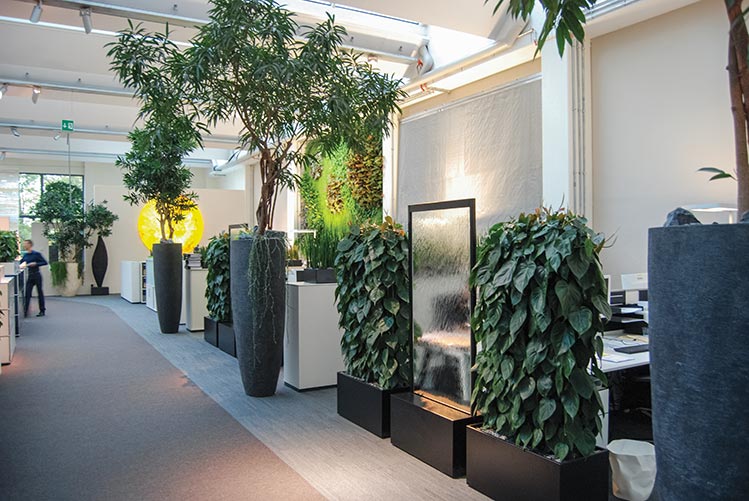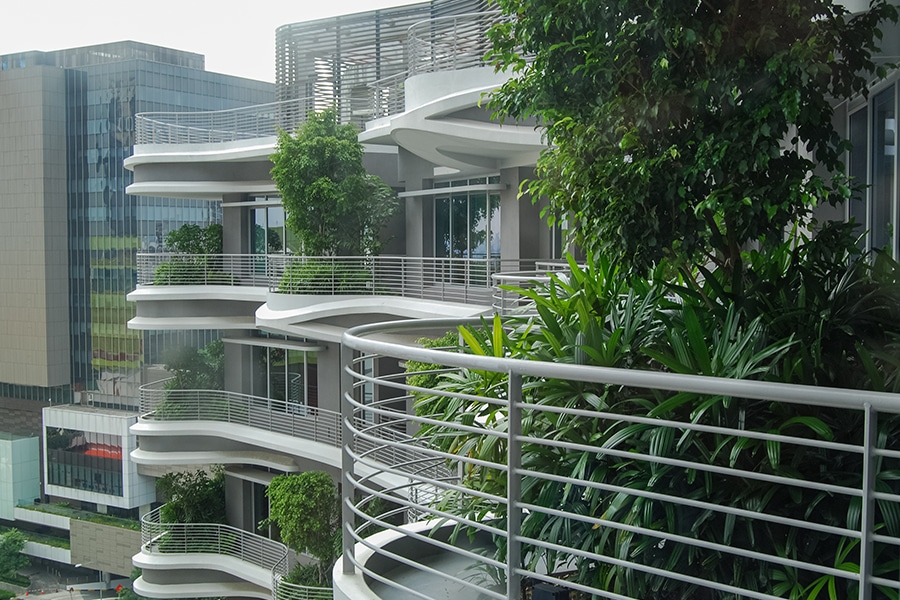With 2020 placing a greater emphasis than ever on physical and mental well-being in every space from residences to retail stores, the heightened focus on biophilic design comes as no surprise. Intentionally connecting people with experiences of nature reduces stress, improves cognition and enhances mood.
But that’s not all. In the new book, “Nature Inside: A Biophilic Design Guide,” co-authors Bill Browning and Catherine O. Ryan provide extensive research showing that biophilic design not only improves well-being but also sustainability and the bottom line. The book includes numerous case studies, along with design tools and advice on putting biophilic principles into practice.
The Bluebeam Built Blog recently discussed the scientific and business case for biophilic design with Browning, who is also a founding partner of design consultancy Terrapin Bright Green. Here’s a look at how biophilic design improves outcomes in hospitals, offices and schools.
Promote faster recovery in health care
A body stressed by factors like poor lighting, noise and confinement in an artificial environment takes longer to heal, according to “Nature Inside,” which references numerous academic studies. “Early work on the benefits of biophilic design looked at the view patients had from the hospital bed,” Browning said. “Differences in patient outcomes could be explained solely by the view from the bed.”
The feature image atop this article shows how HOK and CPG Architects brought a view of nature to every bed at the Ng Teng Fong General Hospital in Singapore through vertical windows that looks out onto small tropical sky gardens.
Roger Ulrich’s 1984 study, “View through a window may influence recovery from surgery,” showed that 23 surgical patients assigned to rooms with windows offering a view of trees and shrubs had shorter postoperative stays, required less pain medication and had a better attitude (or so said their nurses) than 23 matched patients in similar rooms with a view of a brick wall.
[SEE ALSO: Here Comes North America’s Largest Living Wall]
Other benefits proven by research include lower blood pressure and heart rate, reduced stress hormones, greater comfort and enhanced health responses. Even a picture or video of a natural scene can produce a beneficial response.
The design factors most researched in health care are healing gardens and controlled access to daylight, according to “Nature Inside.” Both offer an opportunity to measurably improve outcomes. But it’s not only patients who benefit. Staff also experience decreased stress and increased workplace satisfaction, and family and friends enjoy visits more.
Inspire creativity, productivity in workplaces
From rows of desks in offices of the 1950s to the cubicle farms of the 1980s to the open spaces of more recent years, workplaces continue to evolve. But the COVID-19 pandemic has made some ask whether open environments are healthy ones. “If you have well-designed ventilation, open-plan offices are not less safe than enclosed spaces,” Browning said. “Although we’re seeing people putting in plexiglass panels as a temporary solution, part of the open plan is to encourage collaboration and share energy.”
Open spaces provide prospect, a biophilic design pattern that allows an unimpeded view over a distance for surveillance and decision-making. But too much openness can create stress. Offices also need places of refuge, like breakout rooms and egg chairs, to protect workers from the rush of activity.
Perhaps the most bothersome issue in open offices is noise distraction—ringing phones, office machines, co-worker discussions—that can be a major drain on productivity. “There’s a big difference between acoustics and psychoacoustics,” Browning explained. “Acoustics tells you which materials bounce sound or absorb it, how loud it is and what sound comes to your ear. Psychoacoustics tells you what you’re actually hearing. That’s because your brain filters which input it’s going to process.”

Once a task has been interrupted, it takes an average of 23 minutes to re-engage. Although white noise may be most effective at masking sound, it can also irritate listeners over time and actually increase stress and dissatisfaction. But humans are particularly attuned to nature sounds. When compared to conventional white noise, natural soundscapes actually increase performance and positive perception of well-being.
Natural water sounds, specifically the gurgling of a small stream, are most effective; in fact, water outperformed four other sounds for serial recall and creative thinking. In an office of 100 employees, one minute per worker per day of unproductive time equals $18,000 per year in wasted employee compensation, according to 2017 data from the U.S. Bureau of Labor Statistics. Introducing natural sounds into the workplace can be a solid boost from an economic standpoint.
Encourage supportive learning in schools
As early as 1837, German educator Friedrich Fröbel wanted to nurture children in the same way as plants in a garden—the origin of the German kindergarten. And for most of the 20th century, schools were day-lit and ventilated by windows that could be opened and closed, providing views of trees, clouds, sunlight and rain. But in the 1960s, the U.S. educational system began to see these as distractions.
Recent research, however, shows just the opposite. Daylight and views outside provide a tremendous impact on cognitive development and performance. “A study of 2,600 primary school children in Barcelona showed that, separate from demographics, children in schools with more tree canopy had significant improvement in cognitive development over the year,” Browning said. The green spaces study demonstrated improvements in working memory and a greater reduction in inattentiveness.

Better performance extends to older students as well. A study of high school landscapes confirmed that greater exposure to nature has a positive correlation with school experience, graduation and plans to attend college or university, impacting economic and social outcomes even later in life.
Outcome guides design
When creating a biophilic design for any environment, “what you want is multiple and sustained experiences of nature through the course of the day,” Browning said. Although the focus tends to be visual, given the large portion of the brain devoted to seeing, “you can achieve much greater impact if you access multiple senses simultaneously.” That’s where the magic happens.
In a previous book, Browning and his co-authors described “14 Patterns of Biophilic Design,” but added a new pattern, “Awe,” to “Nature Inside.” “We continually comb through scientific studies from different fields, and we can now codify that in 15 experiences of nature in the built environment.” That doesn’t mean all patterns should be used at once, however.
“The patterns chosen should depend primarily on the goal,” Browning said. “Determine what outcome you want to achieve, what pattern you want to implement and then focus on doing that really well.”












